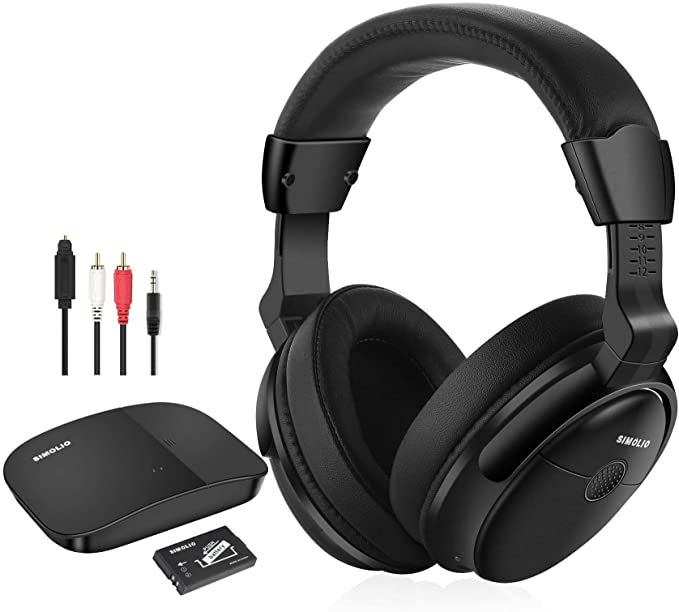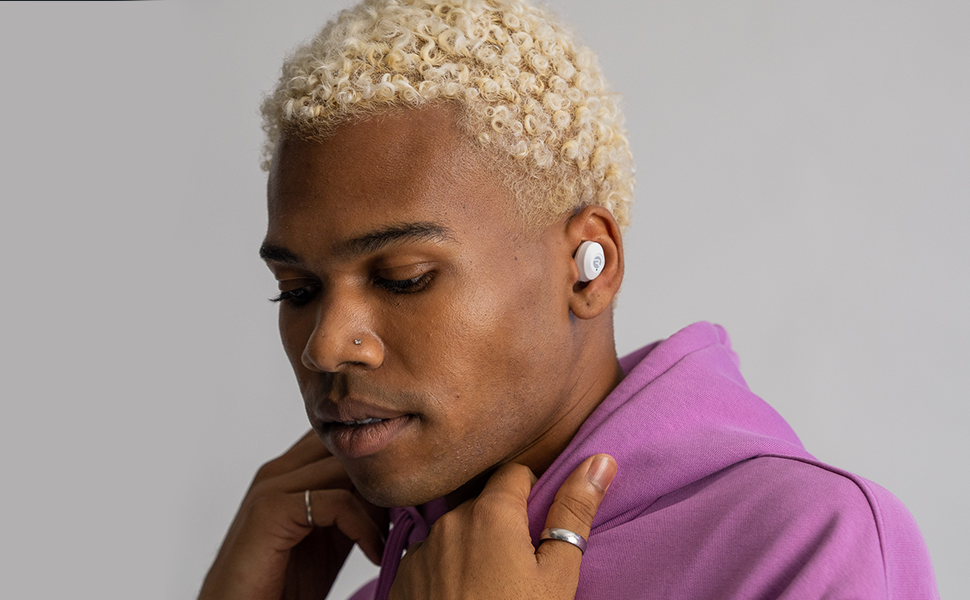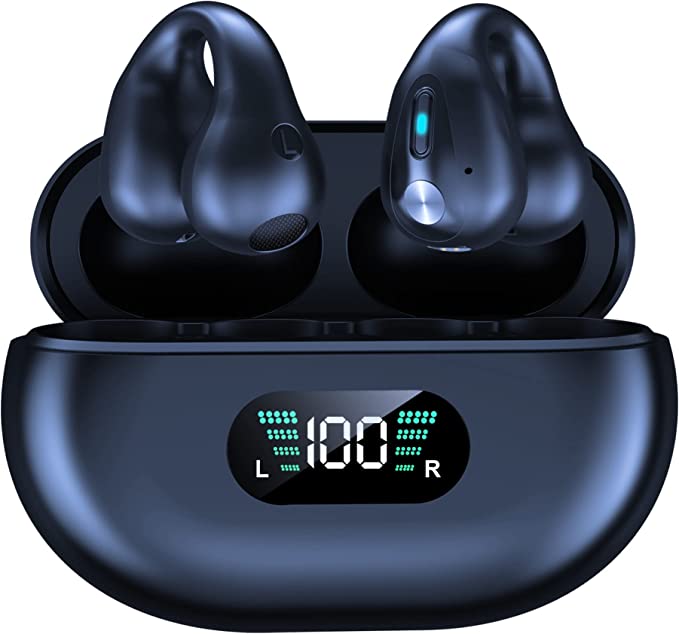Avantree Opera Wireless TV Headphones - Immersive Viewing Experience
Update on July 2, 2025, 6:54 a.m.
It’s a scene playing out in countless homes every night. On the screen, a spectacular car chase unfolds, yet the living room is cloaked in an almost reverent silence. A family member, perhaps a parent or grandparent, sits engrossed in the action, their face illuminated by the flickering light. But to avoid disturbing a sleeping spouse or a studying child, they’re watching what has essentially become a silent film. The experience is compromised, a sacrifice made at the altar of household peace. This quiet dilemma, the tension between shared space and personal immersion, is as old as the television itself. But the solution is a marvel of modern engineering, a story that begins over a century ago.
When Nathaniel Baldwin, a brilliant inventor, cobbled together the first pair of modern headphones in his Utah kitchen in 1910, he wasn’t thinking about movie night. His invention was for naval radio operators, a utilitarian tool for isolating a single voice from a sea of static. For decades, that remained the headphone’s primary role: a functional instrument for solitary listening. Today, that legacy has evolved. In our homes, a device like the Avantree Opera isn’t just a tool for isolation; it has become a sophisticated negotiator, a veritable audio diplomat engineered to resolve the conflicts that arise when different hearing needs and lifestyles collide under one roof.

Decoding the Whispers: The Science of Hearing a Pin Drop
“Could you turn it up? I can’t make out what they’re saying.” This request is the opening salvo in many a living room “volume war.” It’s often followed by, “Now it’s too loud!” The frustration is real, and it’s rooted in a fascinating aspect of hearing science. The problem usually isn’t the overall volume; it’s the clarity of specific frequencies.
Human speech is a complex tapestry of sound, but its intelligibility hinges disproportionately on high-frequency consonant sounds—the sharp ‘s’, ‘t’, and ‘k’ that define our words. As we age, a natural process known as presbycusis often causes our hearing sensitivity to decline, and it typically affects these higher frequencies first. This is why a loved one might be able to hear the low rumble of an explosion perfectly but miss the crucial, whispered line of dialogue that follows. Cranking up the volume is a blunt instrument; it boosts everything, often making the background music and sound effects overwhelming while doing little to improve the actual clarity of the speech.
This is where clever engineering steps in. The Opera’s “Clear Dialogue” mode acts not like a sledgehammer, but like a scalpel. It’s a specialized equalizer that precisely targets and amplifies those vital high-frequency ranges. Imagine it as an expert translator, listening to the cacophony and selectively raising the volume of only the most important voice. The dialogue, once buried, is lifted from the mix and delivered with crisp definition. For the user, it means the end of constantly straining to understand. For the rest of the family, it means the TV can remain at a comfortable, considerate volume.

The Unbearable Lightness of Lag: A Race Against Perception
Our brains are wired for synchronicity. We expect a door to slam the instant we see it shut. When sound and vision fall out of step, the illusion of reality is shattered. This audio delay, known as latency, is an inherent challenge in the world of wireless digital audio. Every step—from the TV processing the sound, to encoding it for Bluetooth transmission, to the headphones decoding it—takes time, measured in milliseconds (ms).
You may not think you’d notice a tiny delay, but psychological studies have shown that most people can perceive an audio/video mismatch when latency exceeds about 50 to 60 milliseconds. It creates a deeply unsettling, almost dreamlike quality that pulls you right out of the story. To maintain total immersion, the technology must win this race against perception.
The Avantree Opera system is engineered to achieve a latency of just 30ms. This isn’t just a number on a spec sheet; it’s a passport to an uninterrupted experience. It’s so far below the threshold of human perception that the audio feels instantaneous, perfectly tethered to the on-screen action. This is made possible by a dedicated, pre-paired link between the headphones and the transmitter, leveraging the stability of Bluetooth 5.0 to ensure that the stream of data remains swift and constant. It’s the technological equivalent of a world-class simultaneous interpreter, translating the event so quickly that you forget they’re even there.

One TV, Two Realities: The Treaty of Pass-Through
Perhaps the most elegant piece of diplomacy this system achieves is solving the “either/or” problem. Historically, using headphones meant silencing the TV’s main speakers or soundbar, forcing a choice: either everyone listens quietly, or one person gets a private experience while the others get none. This is where the deceptively simple “Pass-through” feature becomes a hero of household harmony.

To understand its genius, think of a railway switch. A train (the audio signal) comes down a single track (the optical cable from your TV). The transmitter base acts as that switch. It accepts the train, but instead of sending it down just one path, it flawlessly duplicates it in an instant. One “train” is sent wirelessly to your headphones. The other, an identical, undiminished signal, is “passed through” the transmitter’s output and continues down the track to its original destination: your soundbar or home theater receiver.
The result is revolutionary for shared spaces. One person can be fully immersed in their own world, with dialogue enhanced and volume personalized, thanks to the headphones’ comfortable, lightweight design featuring soft memory foam earpads. Simultaneously, everyone else in the room can enjoy the full, cinematic power of the main speaker system. A teenager can game with intense audio, a spouse can watch a late-night movie without waking their partner, and a family can enjoy a film together, with each member experiencing the sound exactly as they prefer. It’s not a compromise; it’s a new form of audio coexistence.

The Sound of Connection
Let’s return to that silent living room. Now, the scene is different. The headphones are on, delivering crisp, clear dialogue at a perfect personal volume. The soundbar is on, filling the room with a rich soundscape for everyone else. The technology—from the long-range Class 1 Bluetooth that lets you grab a drink from the kitchen without missing a beat, to the marathon battery that will outlast any binge-watching session—works silently in the background.

What’s left is not the feeling of using a gadget. What’s left is the shared laughter during a comedy, the collective gasp during a thriller, the quiet joy of enjoying something together, without conflict or compromise. The greatest triumphs of engineering are often the ones that become invisible, erasing a problem so completely that we forget it ever existed. This isn’t just about a pair of headphones. It’s about how thoughtful design, grounded in a deep understanding of science and human need, can turn down the volume on household friction and turn up the sound of connection. It’s the art of the audio diplomat.



























































